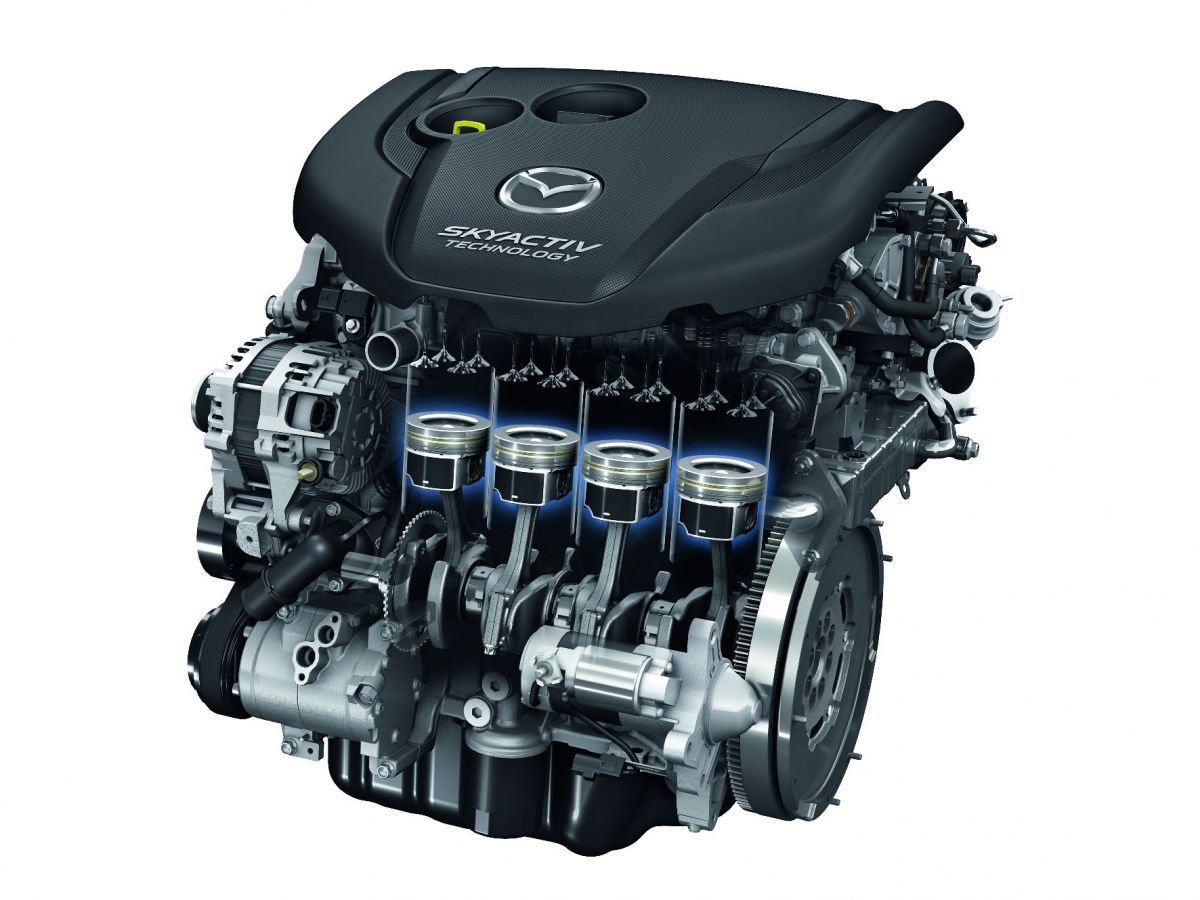When it comes to compact cars and sedans, drivers typically prioritize fuel efficiency, affordability, and ease of ownership. But beneath the sleek body lines and comfortable interiors, it’s the engine that truly determines whether a car will be a headache or a highway hero. The most reliable engines in this segment have stood the test of time — surviving harsh winters, long commutes, and years of start-stop city driving without breaking a sweat.
These engines are often not the most powerful, but they’re engineered for simplicity, durability, and low maintenance. From Toyota’s ultra-dependable 1.8L found in millions of Corollas to Honda’s smooth-revving 1.8L R18A in the ever-popular Civic, these powerplants are known for going well past the 200,000-mile mark with little more than regular oil changes.
Whether you’re a first-time car buyer, a daily commuter, or someone simply looking for a no-fuss ride that’ll keep going year after year, the engines highlighted here are exactly what you want under your hood. In this article, we’ll explore the top contenders in the compact and midsize sedan world — breaking down why they last, what vehicles they’re found in, and what real-world drivers have to say.
Top Reliable Engines
| Engine | Vehicles | Notes |
| Toyota 1.8L (2ZR-FE) | Corolla, Matrix, Prius | CVT or not, this thing lasts 300k+ with oil changes. |
| Honda 1.8L (R18A) | Civic (2006–2011), Fit | Doesn’t burn oil, easy to service. |
| Honda 1.5L (L15B) | Fit, Civic, HR-V | Great if you avoid early turbo versions (oil dilution). |
| Mazda 2.0L SkyActiv-G | Mazda3, CX-30 | High compression but very efficient & reliable. |
| Hyundai 2.0L MPI (Nu) | Elantra, Forte | Avoid turbo, NA version is strong. |
| Chevy 1.4L Turbo (LUJ/LUV) | Cruze, Sonic | Surprisingly reliable if kept cool and fluids are fresh. |
Toyota 1.8L I4 – 2ZR-FE / 2ZR-FAE
Toyota introduced the 2ZR engine in the late 2000s, with the goal of replacing the aging 1ZZ series. It became the go-to powerplant for the Toyota Corolla, Matrix, and even some Scion and Lexus models in smaller markets. Over time, it evolved into several variants, including the more advanced Valvematic-equipped 2ZR-FAE and the hybrid-dedicated 2ZR-FXE.
Mechanically, the engine was designed for longevity and simplicity: aluminum block and head, timing chain instead of a belt, and dual variable valve timing (VVT-i). Later versions introduced Valvematic, which offers continuously variable valve lift for better efficiency and throttle response.
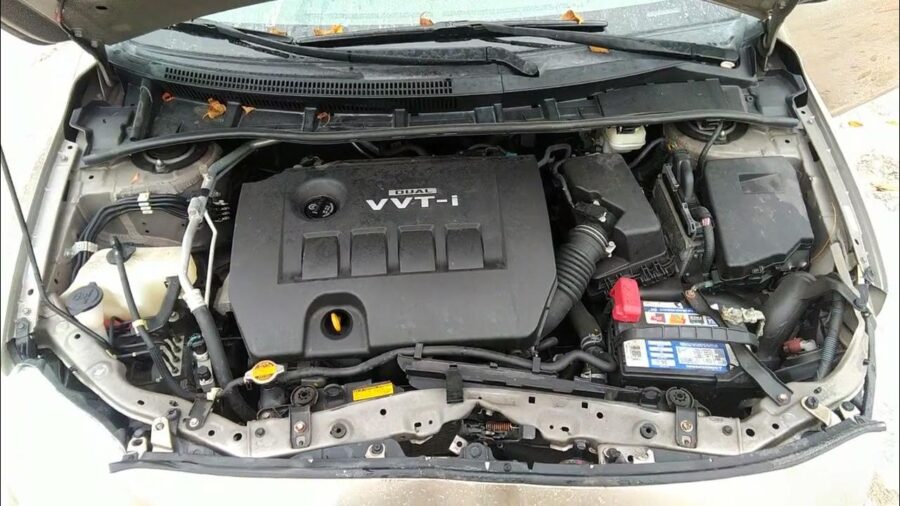
Despite being rock-solid, early 2ZR engines could suffer from minor oil consumption after 100,000 miles, especially if oil change intervals were stretched. Some owners also report slightly sluggish performance, but that’s more about tuning than engineering failure. CVT transmissions paired with this engine in later Corollas can be a weak point, but the engine itself is a near-legend in reliability circles.
This engine isn’t exciting—but that’s exactly why it’s great. There are 300,000-mile Priuses and Corollas running this engine with no drama. It’s become one of the most respected “A-to-B” powerplants ever made.
Honda 1.8L I4 – R18A / R18Z
The R18 series debuted in 2006 with the eighth-generation Honda Civic, replacing the older D17 engine. It kept Honda’s classic SOHC i-VTEC design philosophy, offering a smooth and efficient ride while remaining low-maintenance. It makes slightly less power than Toyota’s 2ZR on paper, but in real-world driving, the R18 is smoother and often more responsive.
Honda engineered this engine with simplicity in mind—no turbocharging, no direct injection, and a solid cast aluminum structure. The i-VTEC system here isn’t designed for performance; it’s tuned to optimize efficiency and emissions at different RPMs. One unique touch is the use of a variable-length intake manifold, helping with torque spread.
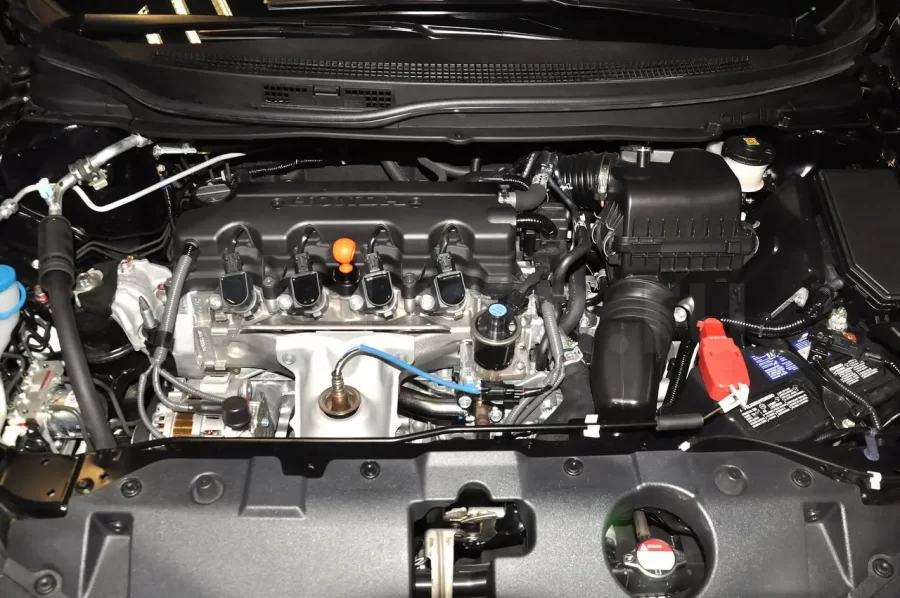
As for faults, the R18 is quite clean—very few systemic issues. Some engines do develop minor oil seepage around the valve cover gasket or VTEC solenoid after 100k miles, but repairs are inexpensive. If the maintenance schedule is followed (oil changes every 5k–7k miles, valve adjustments every 100k), these engines can routinely go over 250,000 miles.
In many ways, the R18 is the modern spiritual successor to the old D-series motors: not powerful, but utterly dependable. Civic fans love it for that.
Honda 1.5L I4 – L15B (NA & Turbo)
The L15 has existed since the early 2000s, but the L15B variant really got attention starting with the 2015+ Honda Fit and the 10th-gen Civic. It came in both naturally aspirated and turbocharged versions. The NA version continued Honda’s tradition of small, efficient engines, especially in lightweight cars like the Fit and City. The turbo version, however, was a big shift for Honda—it marked their return to forced induction in mainstream cars.
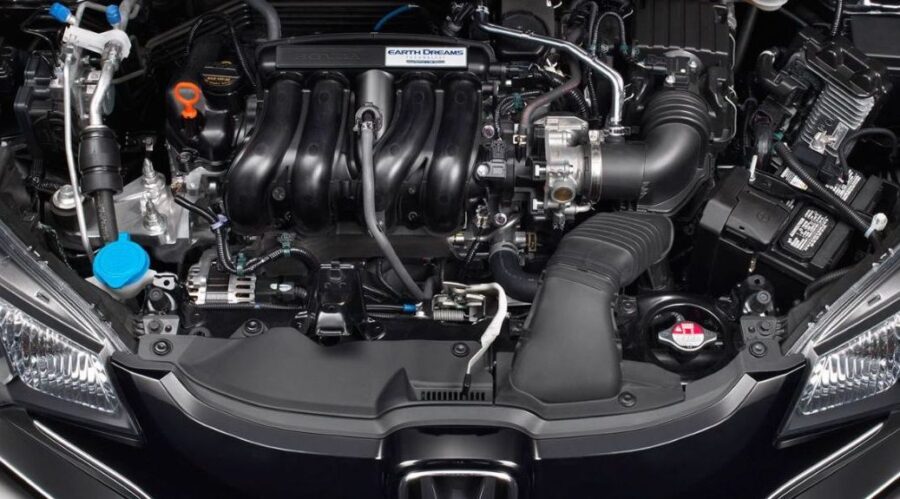
The NA version is as solid as it gets—very few issues and excellent fuel economy. It’s known for its snappy throttle, good thermal efficiency, and a high redline for such a small engine. The turbo variant (especially in Civic 1.5T models) introduced more power, but also brought in early concerns about oil dilution, especially in cold climates. This happens when fuel gets into the oil during short trips, thinning it out and affecting engine wear.
Honda made ECU adjustments in 2019 and beyond to help mitigate the issue, and owners who changed their oil regularly (around 3,000–5,000 miles) rarely experienced long-term problems. Overall, the L15 is one of the better turbo-four engines in terms of balance between performance, economy, and long-term health—just not quite as bulletproof as the old R18.
Mazda 2.0L I4 – SkyActiv-G
Mazda took a bold step in the 2010s by going against the grain. While other manufacturers moved to downsized turbo engines, Mazda developed high-compression, naturally aspirated motors under the SkyActiv branding. The 2.0L SkyActiv-G engine debuted around 2011 in the Mazda3 and quickly gained a reputation for being fun to drive and unusually reliable for such a high-compression design (typically around 13:1 or 14:1).
This engine uses direct injection and a very tight combustion chamber to maximize fuel efficiency. Despite its complexity on paper, it’s incredibly robust in real-world use. It has a timing chain, forged crankshaft, and a lightweight design that helps keep the car nimble and responsive. Unlike many direct injection engines, carbon buildup on valves is less of an issue—Mazda’s fuel delivery system and valve timing help reduce the gunk that plagues some VW and Hyundai engines.
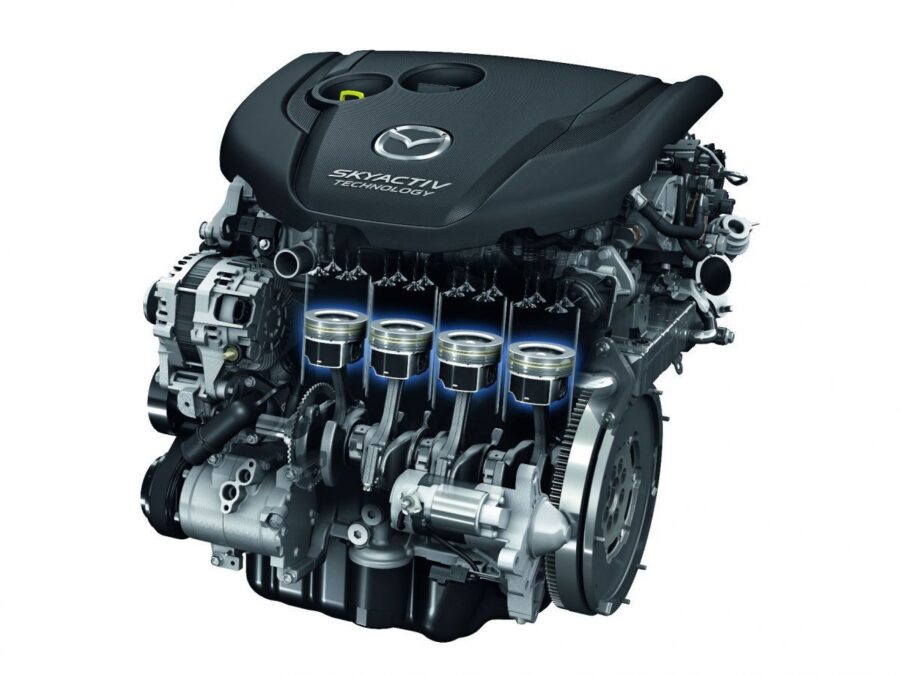
There are a few things to watch for. Early models had some minor quirks like noisy injectors and occasional cold-start stumble, but nothing critical. Long-term durability has proven excellent, especially with regular oil changes using the correct low-SAPS oil (usually 0W-20).
SkyActiv-G engines don’t make a ton of power, but they deliver it in a linear, rev-happy way that reminds many of old Honda engines. They’re efficient, clean, and built to go the distance.
Hyundai/Kia 2.0L I4 – Nu MPI (Non-Turbo)
The Nu engine family was Hyundai’s answer to modernizing their compact powertrains without going full turbo. The 2.0L MPI variant (port injection, not direct) appeared in the Hyundai Elantra, Kia Forte, and other entry-level models around 2011 and has remained a mainstay in their lineup ever since.
This engine keeps things basic: dual overhead cams, aluminum construction, and variable valve timing on both intake and exhaust cams. The key point here is that it avoids the complexity—and risk—of direct injection or turbocharging. That makes the MPI version far more reliable than its turbocharged cousin, the GDI (Gasoline Direct Injection) engines used in sportier trims.
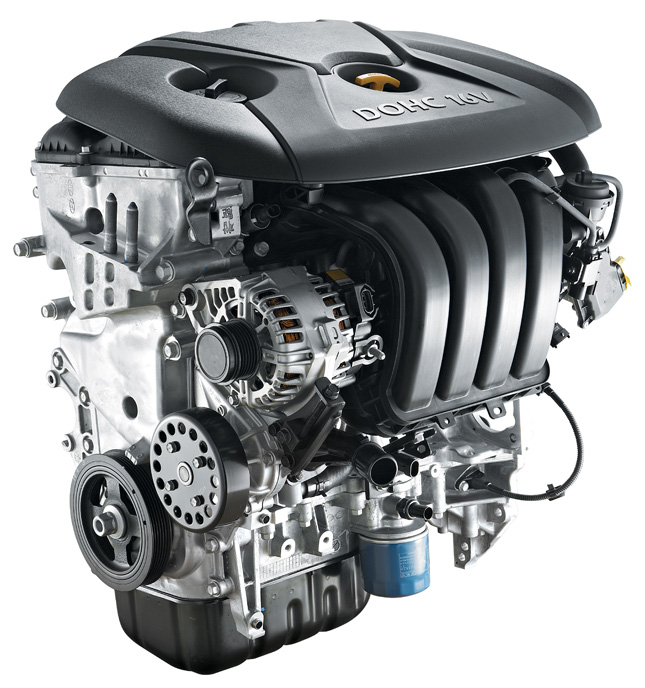
For the most part, this engine is quiet, efficient, and durable. However, there are a few things worth knowing. Some early Nu 2.0s (2011–2014) had issues with engine knock and premature wear, especially in higher-mileage models with poor maintenance. Hyundai quietly updated the design and engine management software over the years to reduce noise and improve longevity.
The real Achilles’ heel of the Nu MPI is not the engine itself, but the cars it’s bolted into—Hyundai’s CVTs and older automatic transmissions can be a bit flaky. If you find one paired with a manual or well-maintained auto, you’re looking at a decently long-lived engine.
In short: it’s not quite Toyota or Honda level, but the Nu MPI is a dependable budget option—just avoid the turbo versions.
Chevrolet 1.4L I4 Turbo – LUJ / LUV
The 1.4L LUJ/LUV engine was GM’s global small turbo engine in the early-to-mid 2010s, found in the Chevy Cruze, Sonic, Trax, and even the Spark RS in some markets. On paper, it offered a nice blend of torque and fuel efficiency—but in practice, this engine had a mixed reputation.
It’s a DOHC, turbocharged four-cylinder with a cast-iron block and aluminum head. Being a small-displacement turbo, it ran hot and required careful maintenance—something most economy car buyers didn’t give it. That’s where the issues came in.
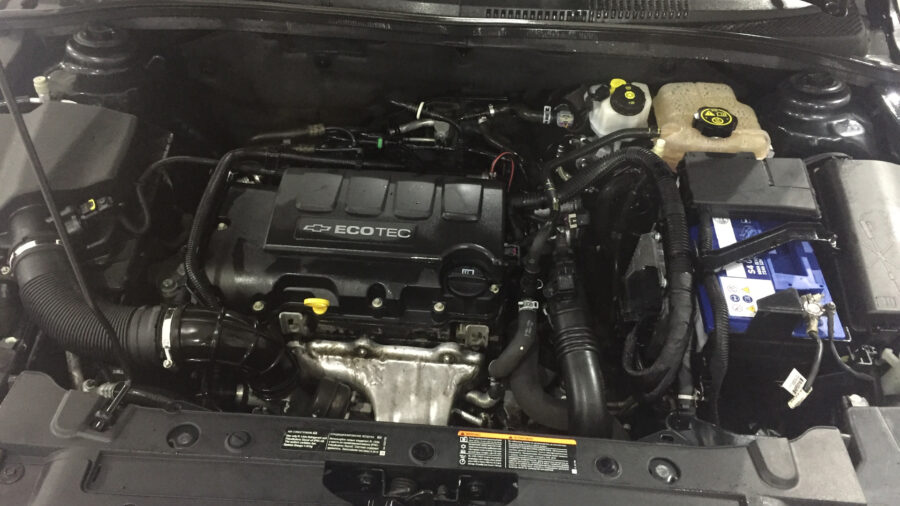
Many early Cruze and Sonic owners reported thermostat failures, coolant leaks, turbocharger failures, and even head gasket problems before 100,000 miles. Part of the problem was poor cooling system design—these engines would easily overheat if the cooling fan or thermostat failed, which often led to bigger problems. There were also widespread PCV (Positive Crankcase Ventilation) valve issues that could lead to vacuum leaks and rough idle.
However, the LUV variant (an updated version) improved a lot of these faults by 2014. With proper maintenance—frequent oil changes, coolant flushes, and upgraded PCV systems—these engines can be surprisingly durable. Some owners have taken them well past 150,000 miles with minor issues, especially in cooler climates.
So the 1.4L Turbo isn’t a disaster, but it’s picky. Avoid the early model years (2011–2013) unless it has a documented service history. It can be a fun little engine to drive, but you’ll have to stay on top of fluids and heat management if you want it to last.
Best Years to Buy (Reliable)
- Toyota Corolla (2014–2019) – Rock-solid drivetrain, decent CVT.
- Honda Civic (2012–2015) – No turbo = no trouble.
- Mazda3 (2014–2018) – Great engine, solid chassis.
- Hyundai Elantra (2017–2020) – Base models with 2.0 MPI are reliable.
Years/Trims to Avoid
| Car | Years/Issues |
| Civic (2016–2018 Turbo) | Oil dilution on 1.5T (cold climates especially). |
| Chevy Cruze (2011–2015) | Early 1.4T had overheating & head gasket issues. |
| Hyundai/Kia 1.6T engines | Turbocharged models prone to knock/detonation. |
Maintenance Tips
- Stick to 5,000–7,000 mile oil changes on naturally aspirated engines.
- Use OEM spark plugs—especially on direct injection engines.
- Keep an eye on CVT fluid changes (30k–60k miles) if applicable.
Proven Performers Recognized by Experts
When you think of a vehicle that lasts hundreds of thousands of miles, you’re often thinking about what’s under the hood — the engine. While some engines get the job done for a while, others are built to run strong for decades. Some even earn nods from automotive experts and industry insiders. Here’s a look at several engines that have proven their reliability in the real world, with supporting recognition when available.
Toyota 1.8L (2ZR-FE)
Found in: Toyota Corolla, Matrix, Prius
Why it stands out:
This engine is a known workhorse. Whether paired with a CVT or traditional automatic, the 2ZR-FE routinely pushes past 300,000 miles with minimal drama — as long as basic maintenance like oil changes is followed. It powers some of Toyota’s most sold and trusted vehicles.
Recognition:
While this specific engine hasn’t taken home high-profile awards, Toyota’s long-standing reputation for reliability (topping J.D. Power and Consumer Reports rankings year after year) is largely thanks to engines like this.
Honda 1.8L (R18A)
Found in: Honda Civic (2006–2011), Honda Fit
Why it stands out:
This SOHC i-VTEC engine doesn’t burn oil, rarely suffers from timing chain issues, and is delightfully easy to service. It’s one of the reasons the 8th-gen Civic is still everywhere today.
Recognition:
Though not award-winning on its own, the R18A contributed to Honda’s placement in multiple “Top Engine” lists by Kelley Blue Book and was praised for reliability by publications like Car and Driver and MotorTrend.
Honda 1.5L (L15B)
Found in: Fit, Civic, HR-V
Why it stands out:
The L15B is one of Honda’s newer small engines and is surprisingly versatile, offering both naturally aspirated and turbocharged variants. While early turbo versions (especially in Civics) had some oil dilution issues, Honda corrected many of these in later models.
Recognition:
Honda’s Earth Dreams technology, which powers the L-series engines, earned accolades for efficiency and engineering, including praise from Ward’s 10 Best Engines in other variants.
Mazda 2.0L SkyActiv-G
Found in: Mazda3, CX-30
Why it stands out:
Mazda took a bold step with high-compression ratios for a gasoline engine (13:1 in some markets) without sacrificing durability. The result is an efficient yet lively engine with fewer moving parts — a recipe for longevity.
Recognition:
Mazda’s SkyActiv-G series won the 2012 RJC Technology of the Year Award in Japan, recognizing innovation in engine design. It continues to be praised by Consumer Reports for long-term reliability.
Hyundai 2.0L MPI (Nu Engine)
Found in: Hyundai Elantra, Kia Forte
Why it stands out:
While Hyundai’s turbocharged engines have seen mixed reliability reports, the naturally aspirated 2.0 MPI Nu engine remains strong. It’s simple, efficient, and doesn’t suffer from the direct-injection carbon build-up issues that plague some competitors.
Recognition:
Hyundai has consistently ranked well in J.D. Power’s Initial Quality Studies, and this engine plays a part in that, though it hasn’t received a dedicated engine award.
Chevrolet 1.4L Turbo (LUJ/LUV)
Found in: Chevy Cruze, Sonic
Why it stands out:
Despite its small size and forced induction, this engine has proven to be surprisingly dependable when cared for — particularly in terms of keeping it cool and refreshing fluids.
Recognition:
While not a headline grabber, the LUJ/LUV 1.4L has a strong owner base that supports its reputation in forums and long-term tests by sites like RepairPal and Cars.com.

